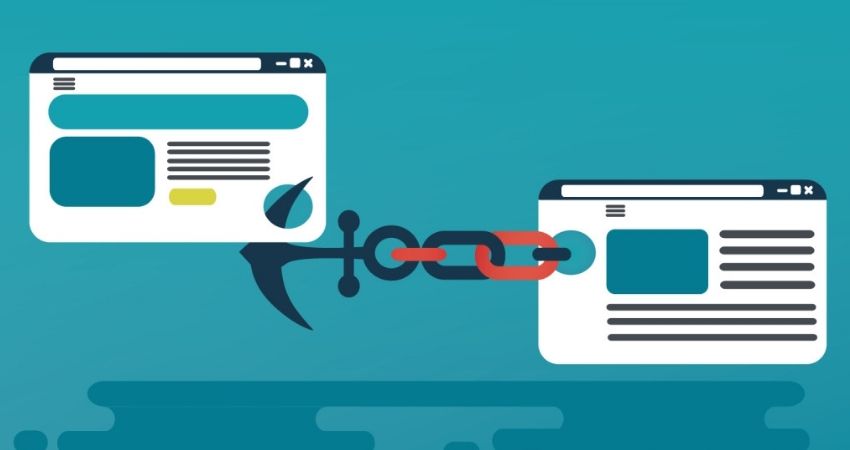In this article, we have featured How to Optimize Your Anchor Text Strategy For SEO? In its early stages, search engine optimization (SEO) was a lot like the Wild West.
Blackhat SEO specialists stuffed their websites with keywords and created spammy backlinks among other unethical practices in an attempt to increase their sites’ rankings on Google.
It did work…for a little while.
In this day and age, Google’s SERP Algorithm has placed a greater emphasis on the quality of the material shown, rendering obsolete many of the earlier SEO techniques. Details such as the anchor text are important.
Why? Because we are making use of a more sophisticated and intricate algorithm. There are currently over 200 different variables that Google uses to rank websites.
More than one million websites were affected by the latest Core Web Vitals change, which said that websites must load quickly, remain reliable, and provide enough security. This indicates that websites that want to rank alongside producing and publishing your content need to improve the on-site experiences they provide their users.
In a similar vein, Penguin, often known as the “webspam algorithm,” has undergone several modifications over the course of the past few years. It is more vital than ever before to include relevant anchor text in your backlinks and internal links.
When there is an excessive amount of “noise,” it might throw off the algorithm. If you provide too little information, you will throw off the algorithm.
It’s a fine line to walk there.
When you take into account that SEO will be a top focus for the majority of marketers in 2022, it is important to pay attention to what is being said.
This tutorial will cover how to optimize your anchor texts to boost your SEO and prevent a Google penalty that significantly affects the size of your audience. Using optimized anchor texts is one of the most effective ways to increase website traffic.
What Exactly Is The “Anchor Text”?
Search engine optimization (SEO) is a challenging field that comprises tens of thousands of minute nuances. One of these features is known as “anchor text.”
You can go from one area on the internet to another by clicking on a text that is referred to as an anchor; this text figuratively anchors two separate locations on the internet together.
Despite the fact that anchors almost often connect to webpages, they are also capable of initiating downloads and linking to documents such as PDFs or files stored in Google Drive. Because of this, you should only click links that come from websites that you know and trust. Additionally, before really clicking on a link, you should move your cursor over it and make sure that the URL appears to be authentic.
The Use of Backlinks and Anchor Text
Given that this piece is about anchors in the context of search engine optimization, it is useful to clarify the difference between nofollow and follow links at this point.
The only difference is that a nofollow link will have an additional piece of code attached to it when it is rendered in HTML.
However, from the perspective of the algorithms that power Google, just one little line of code may make a world of difference.
The nofollow attribute tells Google not to take into consideration the value of the backlink when calculating the SEO value of either page. Since March 1, 2020, Google has begun using a website’s nofollow links as a signal when deciding its rank in search engine results pages (SERP).
The term “Sponsored” notifies Google that the link in question was gained as a result of certain agreements reached between you and a publisher.
UGC stands for “user-generated content,” and it notifies Google that the link, as well as the rest of the information on the page, was added by people.
It tells Google to give credit to the page you’re linking to and to take it into consideration when scanning your links. Follow: It tells Google to give credit to the website you’re connecting to.
Why are link texts so vital for search engine optimization?
When it comes to search engine optimization (SEO), links are quite crucial. For example, you need to provide internal links to your site in order to make the structure of your site visible to search engines.
It is easier for search engines to comprehend your (internal) links if you provide them with some context through the language of the link itself.
When you link to other material, Google examines the language of the link to determine the subject matter of the page to which you are linking.
If the link text matches your keyphrase, Google will not be able to determine which article is the most relevant for the issue at hand and so should rank highest for that keyphrase. Therefore, it can be said that anchor text is a factor in Google’s ranking system.
Link text is vital to your users in addition to providing search engines with more context for the links they index. The anchor text elucidates the purpose of a link and informs users of the destination to which it links.
Therefore, including the target keyphrase in the link text might be misleading not only for search engines but also for the people accessing your site. Because of this, you should avoid conflicting connections wherever possible.
Conclusion: How to Optimize Your Anchor Text Strategy For SEO
Both consumers and search engines can benefit from using anchor text to determine whether or not a link is worth viewing. There are others that attempt to cheat the system, but you shouldn’t put yourself in this predicament.
These days, Google is quite excellent at identifying connections that are not natural and may even be damaging to users’ websites. Therefore, make sure that what you’re saying is both natural and pertinent, and you’ll be OK.




